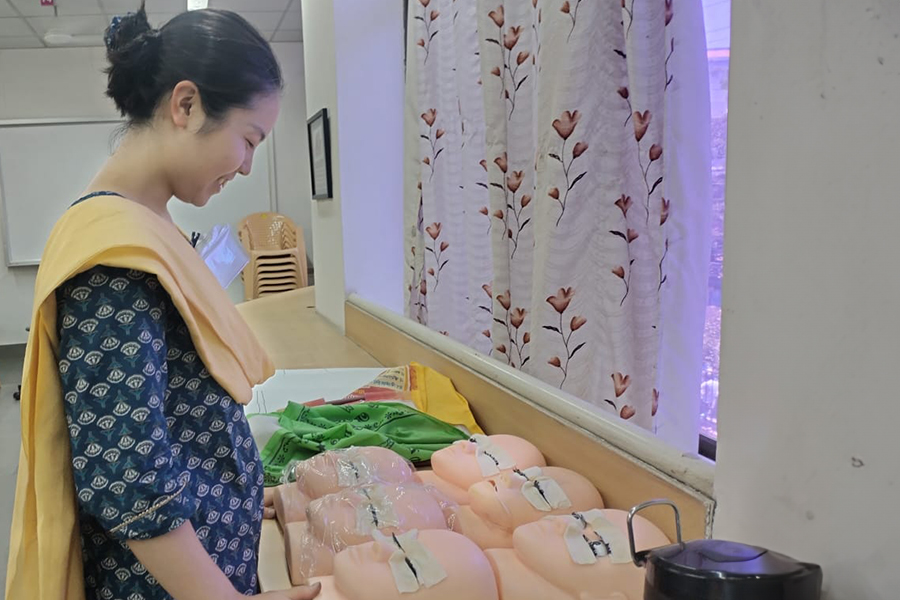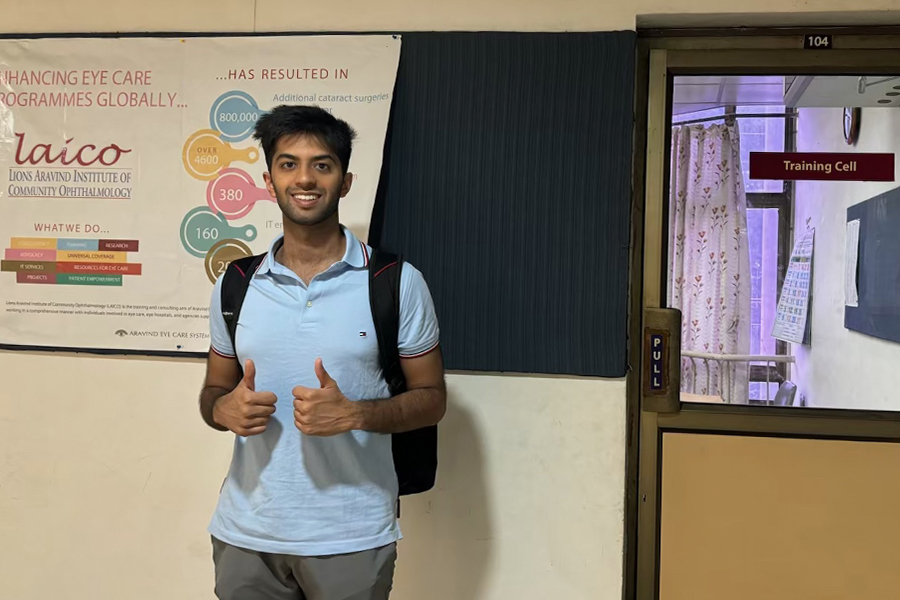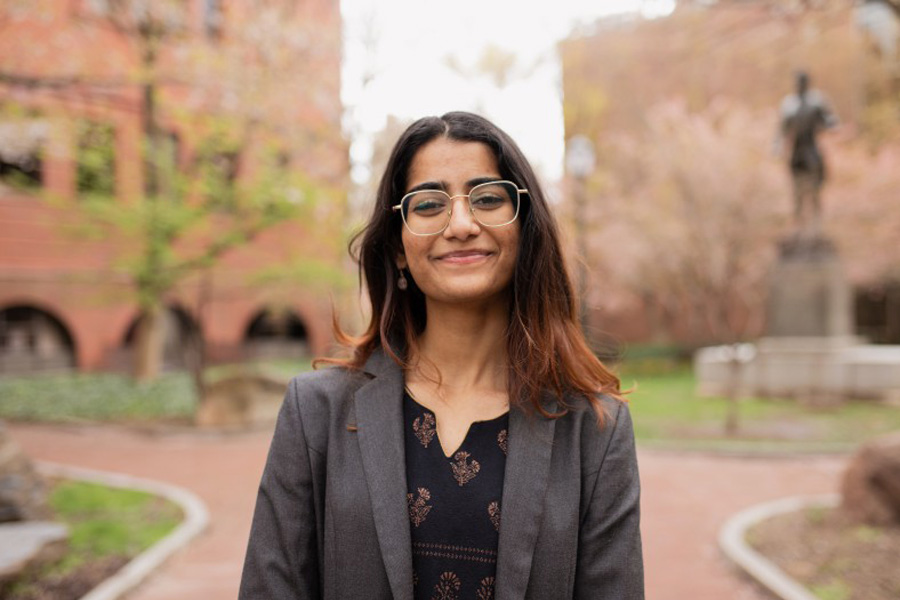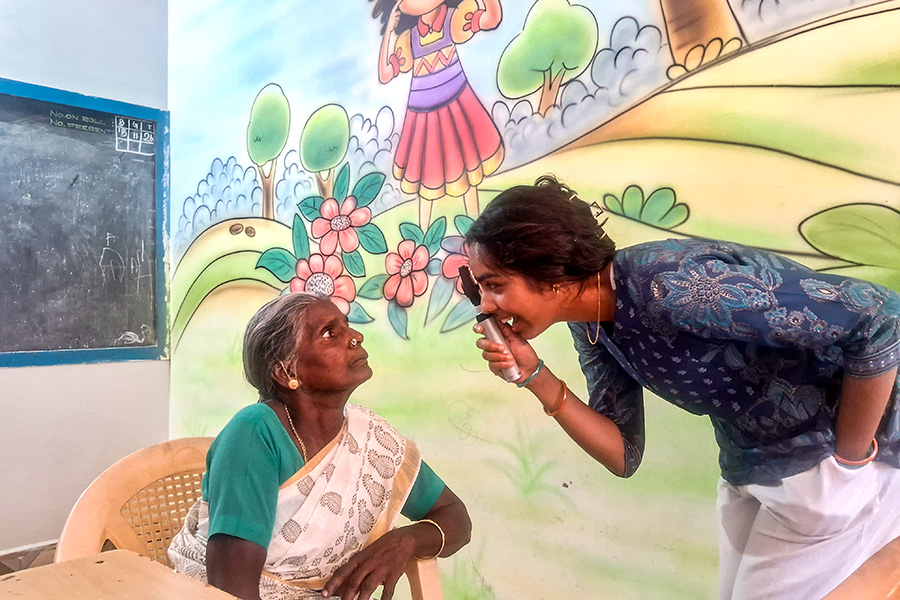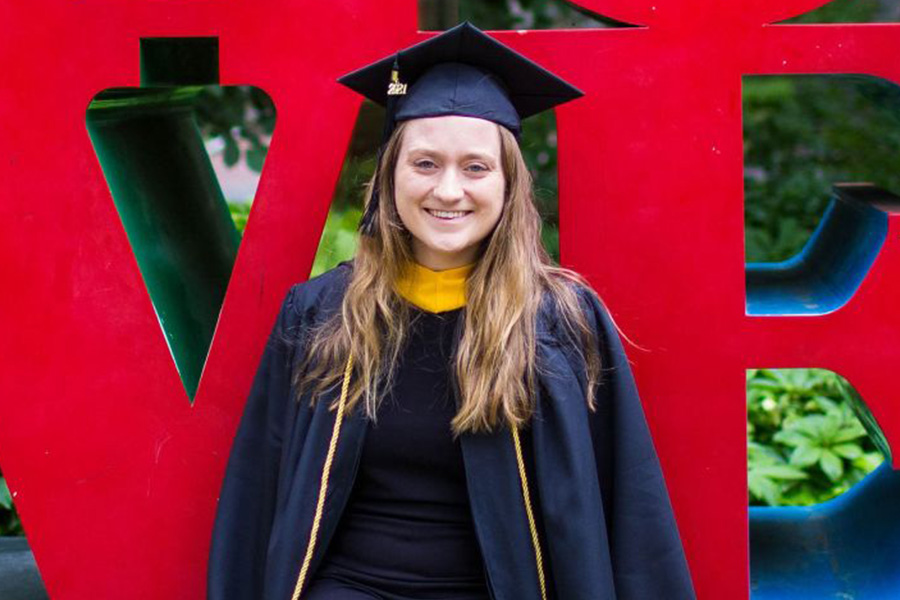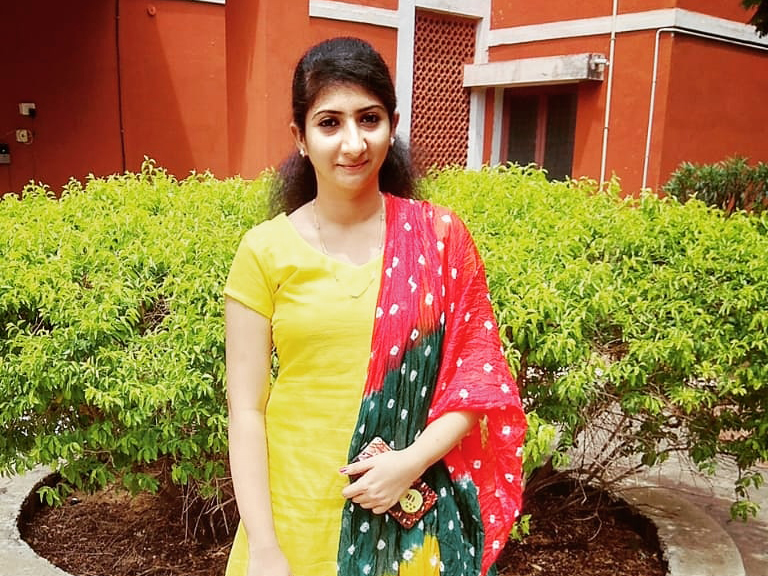Achint Das
A College Student Takes On the Age-Old Question: Why is Aravind So Brilliant?
“The genius of Dr. V was that he added the word ‘needless’ to blindness to mobilize all of us towards this glorious cause” ~ these are the words inscribed on a poster hung on the ground floor of the paying hospital.
“The genius of Dr. V was that he cultivated a rigorous value system that instilled selflessness, industriousness, and self-reliance in holding ourselves accountable for those who are still blind,” said Mr. Thulasiraj Ravilla, director of Lions-Aravind Institute of Community Ophthalmology.
“The genius of Dr. V was that he saw opportunity where no one else did by challenging the necessity of everything we thought was non-negotiable,” said Dr. Venkatesh, director of the Aravind-Pondicherry Hospital.
The same man, yet so many different portraits of his brilliance.
As evident by the high praise, Dr. V was an incredible figure. He was a trained orthopedic surgeon who struggled with rheumatoid arthritis, ultimately leaving him bedridden for over a year. Yet, Dr. V did not let his condition limit his abilities. His innate resilience allowed him to complete his Master’s in Ophthalmology and learn how to perform 1,000 cataract surgeries in just one day. Most importantly, he imagined a revolutionary new system to “McDonaldize” cataract surgeries and enrolled many others in realizing his ambitious vision: his vision has grown into what we know today as Aravind.
Reading the HBS case studies, perusing through various articles, and speaking with my trusted mentors, I was convinced that the brilliance of Aravind was its system — like a perennially oiled factory line, breaking the complex ophthalmology process of care to individual stations honed for efficiency. A patient enters the hospital, enrolls in registration, seamlessly completes vision examinations and investigations by MLOPs, sees an ophthalmologist (or a specialist) for consultation, purchases glasses and medications in the same hallway, and completes billing before leaving. A patient comes without any appointment and with his or her own volition to pay — and receives the same quality of care. The first week I was here, I was mindblown, taking meticulous notes of each step, task, and role. You can read about this special system in one of the hundreds of articles online, and my roughly-jotted-down notes of the system truly could not compare.
But what I can share is my own rudimentary hypothesis on what makes Aravind so brilliant.
I came here claiming the Aravind system as the secret to their success — but after two months, my thoughts have changed. I started to think, why has no one else replicated this system to the same degree of success? So many hospitals, doctors, and managers have come to observe Aravind, and Aravind is very eager to spread its gospel to anyone who asked, even silly college students like me. I took notes for a Vision Building Workshop hosted by LAICO, where Aravind leadership gladly shared all their secrets, protocols, and systems with visiting hospitals in order to create more “Aravinds” around the world (and even in Tamil Nadu)!
While I do not have an exact answer, I’ve come to a general theme at the core of Aravind’s unique identity: its people.
Through visionary leaders, hard-working MLOPs, and a deeply rooted culture, it is the people who make Aravind so special.
1) Leadership
The role of leadership at Aravind is not only to manage the norm and current output — it is to be visionaries, promoting thoughts of innovation however small. As an intern, I’ve seen and heard stories of unprecedented changes initially considered ridiculous that slowly transformed into the standard for eye care. Mr. Thulasiraj proposed creating glasses at outreach camps themselves, Dr. Venkatesh shifted the point of pre- and post-surgical follow-up care to Vision Centers, and Dr. Kim partnered with Google to use AI to grade diabetic retinopathy. Individually, they are some of the most brilliant people I have ever met. The leaders have consistently pushed the boundaries at Aravind and hold themselves to the highest standards for everyone to follow. All employees come to the office by 9 AM because Mr. Thulasiraj has always come by 8:30 AM every day in his last 42 years. Any vision starts at the top and must be communicated and carried through the hierarchy. Aravind leaders do not stop at the top because change does not operate in a vacuum: it requires everyone to be philosophically aligned and mentally invested.
Their success is rooted in the best work ethic I have ever seen and an innate passion for Aravind’s mission. The leaders at Aravind love their work more than anyone I’ve ever seen, harboring a child-like excitement when they walk into their office. But it does not come without sacrifice. They work 6 days a week, sometimes 7 days, with early mornings and long nights. Many can not recall the last time they took a personal vacation for themselves. Work life becomes intertwined with personal and social (and family) life, for better or worse.
2) MLOPs
The leaders may be the mind operating Aravind, but the MLOPs form the backbone of the entire organization. Each year, Aravind recruits hundreds of young unmarried women who recently graduated high school (but who can not afford or go to university) and trains them to operate each “station” in Aravind’s complex factory line. Through a rigorous educational program, MLOPs are taught the skills to put on whatever hat Aravind needs them to: optometrists, record keepers, call center technicians, insurance managers, surgical assistants, lens manufacturers (at AuroLab), housekeeping, or cooking, to name a few. Over 70% of Aravind’s entire workforce are MLOPs. They work in the background, silently but efficiently. They uphold the Aravind institutions as the “unsung heroes,” enabling many projects (including mine) for Aravind.
Yet, without MLOPs, there is simply no Aravind.
3) Culture
Above systems, the Aravind leadership has prioritized cultivating and preserving its unique culture. When asked what they look for when recruiting new employees, they responded with values and morals, saying that skills can always be taught and trained. When asked why they did not merge with other hospitals and organizations, leaders cited that it would dilute their morals and disrupt their alignment in objectives.
When asked how the founders formed and perpetuated this culture, everyone at Aravind attributed the culture to its people.
Aravind’s culture has three core tenets: selflessness, self-reliance, and respect.
Selflessness has allowed Aravind to put the patient first in all discussions, be it management, clinical, or financial. Such intense devotion to selflessness has prevented Aravind from ever engaging in any potential malicious partnerships or allowing corrupting influence to seek in. The objective was never financial profit — the founders adopted a profit motive only to ensure the sustainability of Aravind’s operations (the second tenet). Rather, every decision at every organizational level is tuned to achieve 1 objective: reduce needless blindness in Tamil Nadu.
Self-reliance has moved Aravind to be completely self-sustainable in all its operations: Aravind has never relied on outside capital investments or investors to grow its operations; AuroLab produces all the lenses used for surgery (and slowly developed into a major global supplier); Aravind partners with local restaurants and MLOPs to make and serve all food. Most importantly, Aravind employees are taught to independently create solutions, rather than find alternatives. As Mr. Thulasiraj explained, the people at Aravind “make the impossible possible, instead of switching from one possible ineffective solution to another.” I’ve felt the same expectations as only an intern at Aravind, challenging myself to independently overcome various challenges in executing my project — and I’m incredibly grateful for the growth and confidence it has led to. This focus on self-reliance has also cultivated a culture of frugality. Resources are conserved and reused wherever possible at Aravind; for example, the Theni Hospital repurposed gauze wrapping as patient tracking slips, and the Pondicherry Hospital reuses non-functional prescription lenses as registration numbers. By extracting the value out of everything, each employee at Aravind can maximize the value of their resources, time, and energy.
Respect is the norm in all cultures, schools, offices, and homes. But at Aravind, respect extends beyond courtesy. Respect is apparent in the attention to detail for every assignment, value given to every spare minute out of a person’s busy schedule, and special attention to how you converse and approach leadership — but never in a way that stifles intellectual discourse or creativity. Respect is apparent in how doctors patiently and thoroughly treat every patient. Above all, there is a deep-rooted and widespread respect towards the founding vision of Aravind: providing high-quality, compassionate, and affordable eye care.
Other factors allow Aravind to operate uniquely and successfully: limited regulation to permit MLOP training programs and outreach camps, community sponsorship and mobilization of outreach camps, government support for free services, and local knowledge, staff, and connections within Tamil Nadu. However, none of these factors are the source of Aravind’s brilliance — they simply enable it.
My Own Project at Aravind
Though I’ll save my reflection on my internship for a later post, I will share that as I’m nearing the end of my internship, I am very happy with my experience at Aravind. A combination of Aravind’s unique culture, amazing people (Mr. Gowth, Dr. Sivadarshan, Mr. Thulasairaj, Dr. Kim, Ms. Dhivya, Mr. Jerrome, Ms. Sashipriya, Mr. Yesunesan, Mr. Udayakumar, Ms. Suganya, and Mr. Saravanan, just to name a few), exciting innovation, and support and space for interns like me to take initiative has allowed me to do work that I wake up (on most days) thrilled to tackle.
Having said so much about Aravind, it seems fitting that I end with a short description of my project. I entered Aravind knowing that I wanted to help Aravind improve its long-term care systems. Reading and talking to different people made me realize that Aravind had almost mastered short-term eye care operations and treatments (like cataract surgeries). While there is significant capacity for me to learn from Aravind’s short-term care systems, there was not much room for me to help them improve, especially in the short time I would be here. With this goal in mind, I spent the first 3 weeks observing Aravind’s operations, talking to various leaders, and reading different papers trying to narrow the scope of my project.
Ultimately, I landed in diabetic retinopathy, a condition that leads to irreversible vision loss through the growth of new blood vessels on the retina in at-risk diabetic patients; specifically, I was interested in calculating and improving compliance rates to follow-up visits for diabetic retinopathy patients, which was the only way to monitor and prevent permanent vision loss.
My solution was inspired by a study I read about a remote diabetic retinopathy screening pathway in Zimbabwe, in which nurses used a “store-and-forward” model to send digital pictures of the fundus (using a FUNDUS camera) for ophthalmologists to remotely assess and treat diabetic retinopathy patients at local screening centers. I began reflecting on what I learned at Aravind and soon realized that the same pathway could be improved at Aravind. A literature review of 47 studies listed 8 factors essential for effective screening centers, all of which were present in Aravind. At the time I read this study, I learned about Aravind’s new AI (with Google) for grading diabetic retinopathy using FUNDUS cameras, which Aravind researchers just proved produced diagnoses with clinical accuracy comparable to that of a retina doctor –> I realized Aravind could use this same AI to grade diabetic retinopathy remotely! Instead of screening centers, Aravind-Madurai has 102 Vision Centers, all of which already have remote telemedicine consultation capabilities, FUNDUS cameras, and Google’s diabetic retinopathy grading AI. All of the pieces were in place — all I needed to do was be the first to put them all together and prove that the complete picture created value for Aravind and the patient, the main priority.
My project has two parts: data analysis and implementation. My data analysis will examine all diabetic retinopathy patient visits from January 2022 to June 2023. Using a compliance definition of visiting within 7 days of the appointment date, I will calculate the true compliance rates of different patient groups. I will subclassify compliance rates by the severity of diabetic retinopathy, procedure, surgery, number and frequency of visits, and demographics (age, gender, income, location, etc.). My analysis is open-ended and my conclusions will be informed by the trends and characteristics of my data. However, my main objective is to paint a holistic picture of compliance with long-term diabetic retinopathy care and identify trends and weaknesses in Aravind’s current protocol and systems.
My implementation study will assess the viability and value of a new follow-up visit pathway at Vision Centers for stable diabetic retinopathy patients (mild and moderate non-proliferative diabetic retinopathy). Through a research study with 150 patients, I have 3 main objectives:
- Calculate the difference in compliance rates between patients who visit the Madurai Base Hospital or any Vision Center for their follow-up visit.
- Calculate the average difference in time and money spent on completing follow-up visits for the patient to assess how much time and money can be saved with the transition to Vision Centers.
- Calculate the average difference in the total length of visit between the Vision Center and Madurai Base Hospital for a follow-up visit.
- For context, the Retina Clinic at Madurai is very crowded and a patient visit takes an average of 4 hours. In comparison, Vision Centers rarely take more than 1 and a half hours.
-
- I will scale the average time saved per visit to calculate the total number of new surgeries, visits, and procedures the Aravind-Madurai Base Hospital can expect to complete per year under optimal conditions.
Where this project will take me, I am not sure yet. However, I’ll keep everyone updated on how it goes!
Closing Thoughts
To conclude this blog, one of my mentors once told me that you should not choose your next destination, be it education, work, or volunteering, based on prestige, program, or location –> you should always choose your next destination based on the people you’ll share it with.
Reflecting on my experiences and my current time at Aravind, I see exactly what my mentor was referring to. In everything I’ve enjoyed in my life, be it at college, internships, clubs, or travel, I can almost always attribute the reason for my happiness to the friends I made at every turn. I came to Aravind for its systems, work, and unique approach to eye care — but if I ever come back, it will be for the people.



